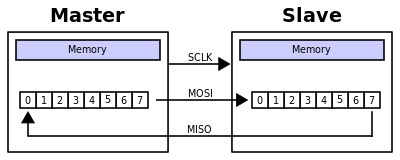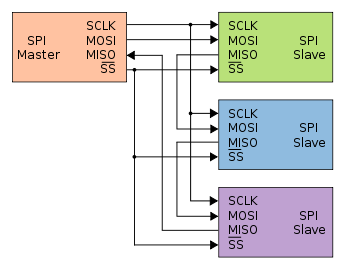援引自:
http://en.wikipedia.org/wiki/Serial_Peripheral_Interface_Bus
The SPI bus specifies four logic signals.
SCLK — Serial Clock (output from master)
MOSI/SIMO — Master Output, Slave Input (output from master)
MISO/SOMI — Master Input, Slave Output (output from slave)
SS — Slave Select (active low; output from master)
Alternative naming conventions are also widely used:
SCK, CLK — Serial Clock (output from master)
SDI, DI, SI — Serial Data In, Data In, Serial In
SDO, DO, SO — Serial Data Out, Data Out, Serial Out
nCS, CS, CSB, nSS, STE — Chip Select, Slave Transmit Enable (active low; output from master)
The SDI/SDO (DI/DO, SI/SO) convention requires that SDO on the master be connected to SDI on the slave, and vice-versa. Chip select polarity is rarely active high, although some notations (such as SS or CS instead of nSS or nCS) suggest otherwise.
SPI port pin names for particular IC products may differ from those depicted in these illustrations.
这里指出了SPI的四个接口信号:
- SCLK:这是同步的串行时钟
- MOSI:下行通道
- MISO:上行通道
- SS:片选信号
命名会有不同,但是万变不离其宗。



